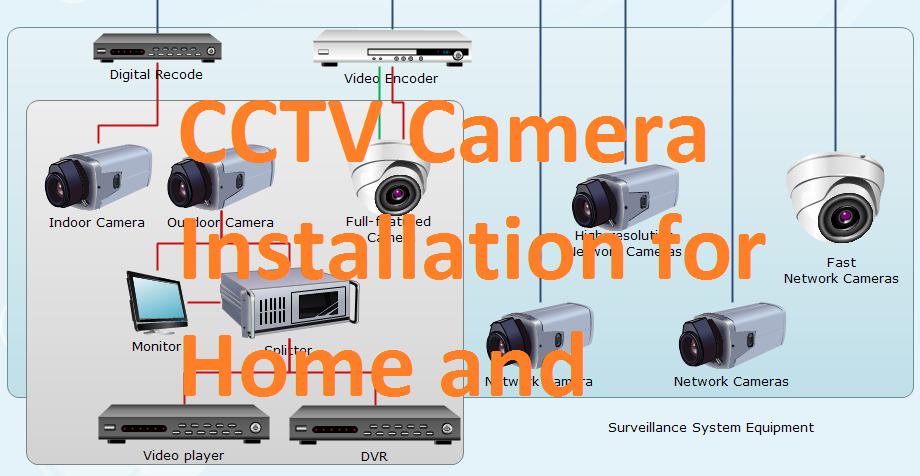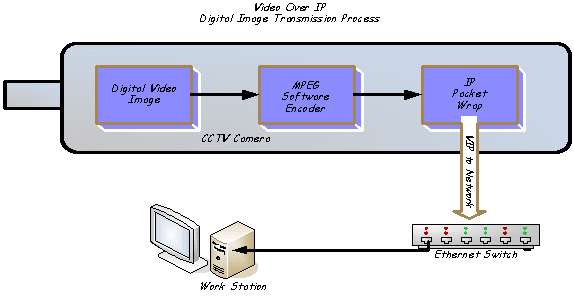The Key Benefits of Implementing a Fiber Optic Security Camera in Your Security Setup
The Key Benefits of Implementing a Fiber Optic Security Camera in Your Security Setup
Blog Article
Exactly How CCTV Cameras With Fiber Optic Outcome Boost Long-Distance Surveillance
CCTV electronic cameras equipped with fiber optic result represent a considerable advancement in long-distance surveillance technology, offering unmatched advantages over typical systems. By leveraging the residential properties of light transmission via optical fiber, these video cameras make certain high-definition video clip top quality stays undamaged across comprehensive ranges while effectively minimizing electromagnetic interference. This development not just enhances image quality yet also simplifies installment procedures and source allocation. As we check out the implications of this technology, one should take into consideration exactly how these advancements are reshaping the landscape of safety and surveillance systems in various applications.

Understanding Fiber Optic Innovation
Fiber optic modern technology is significantly used in long-distance tracking applications because of its phenomenal ability for information transmission. This modern technology uses thin hairs of glass or plastic fibers to transmit information as light signals, considerably decreasing the depletion typically related to typical copper wires. The intrinsic homes of optical fiber enable the transmission of huge volumes of information over substantial distances without loss of top quality, making it a suitable choice for applications calling for reputable communication.
The concept of complete internal reflection promotes the efficient transmission of light within the fiber, making sure high transmission capacity and rate. Unlike electrical signals in steel cables, optical fiber are unsusceptible to electromagnetic interference, enhancing the integrity of data transmission. This characteristic is particularly beneficial in settings with high degrees of electric sound, such as commercial setups or metropolitan areas.
Furthermore, fiber optic cords are lighter and a lot more versatile than their copper equivalents, which streamlines setup and decreases architectural lots. With their sturdiness and resistance to environmental factors, optical fiber are appropriate for outside applications, thereby prolonging the reach of keeping an eye on systems. Because of this, fiber optic technology is becoming a keystone in contemporary security options, efficiently addressing the difficulties of long-distance monitoring.
Advantages of Fiber Optic CCTV
Utilizing fiber optic modern technology in CCTV systems uses various benefits that improve surveillance abilities. Among the main advantages is the ability to send high-def video over long distances without significant signal degradation. Unlike traditional copper cords, optical fiber can maintain video quality over extensive runs, making them suitable for huge properties or remote monitoring areas.
In addition, fiber optic cords are much less prone to electromagnetic disturbance, which can distort signals in traditional systems. This makes sure clearer images and uninterrupted solution, vital for safety surveillance. Moreover, fiber optics are inherently much more safe and secure, as obstructing signals needs specialized tools, hence providing an added layer of protection versus unapproved access.
The light-weight and small nature of fiber optic cables likewise streamlines installment, enabling much easier transmitting via tight areas and lowering total labor prices. Their longevity makes them immune to ecological factors such as dampness and temperature variations, extending the lifespan of the security system.
Lastly, fiber optic systems can sustain a higher number of cams on a solitary network, maximizing sources and offering scalability for future growth. These benefits make fiber optic CCTV systems an exceptional choice for contemporary click here for more info surveillance demands.
Comparison With Standard Systems
When comparing CCTV systems, typical configurations usually drop brief in a number of vital areas, specifically in regards to range and signal honesty. Traditional coaxial cable television systems normally deal with substantial signal deterioration over cross countries, limiting efficient surveillance varies to roughly 300 feet Get the facts (cctv fibre optic cable). Yet threshold, photo quality reduces, leading to potential blind areas and lowered surveillance performance
On the other hand, fiber optic systems maintain signal honesty over a lot better ranges, often exceeding several miles without loss of high quality. This is mainly because of their capability to transfer data as light signals, which are much less prone to electro-magnetic disturbance than electric signals utilized in conventional systems.
Furthermore, typical systems require much more comprehensive maintenance and troubleshooting as a result of their susceptability to ecological elements such as moisture and electromagnetic sound. Fiber optic systems, on the other hand, offer improved resilience and reduced maintenance prices, as they are less prone to damages.
Applications in Long-Distance Monitoring
The advantages of contemporary CCTV systems in keeping signal stability over cross countries open a variety of applications for long-distance monitoring. One substantial application is in city monitoring, where districts deploy fiber optic CCTV systems to keep track of public rooms, improving safety and security and deterring criminal why not look here task. These systems provide constant, top quality video feeds that are crucial for efficient regulation enforcement and emergency situation action.
Another essential application remains in industrial setups, where remote monitoring of manufacturing procedures and harmful areas is important. Fiber optic CCTV can endure rough atmospheres and transmit data over fars away without loss of high quality, permitting real-time oversight and reducing threats to workers.
Furthermore, crucial infrastructure such as airport terminals, railways, and pipelines benefit from long-distance CCTV surveillance. Safety and security groups can look after big locations from streamlined control spaces, making certain rapid action to any type of cases.
Moreover, in agricultural settings, farmers utilize long-distance CCTV to check plants and livestock, aiding to boost productivity and safety and security. On the whole, the flexibility and dependability of fiber optic CCTV systems make them vital throughout different sectors, enabling thorough monitoring remedies customized to details needs.
Future Fads in Monitoring Technology
How will innovations in technology improve the landscape of security? The future of security technology is positioned for significant transformation, driven by technologies such as expert system (AI), machine understanding, and side computer. These technologies enable real-time information evaluation, permitting quick identification of possible risks and improved situational understanding.
AI-powered analytics will enhance the accuracy of face acknowledgment systems, minimizing incorrect positives and allowing much more reliable tracking of people. The combination of Internet of Things (IoT) tools will promote a seamless network of interconnected security systems, enhancing monitoring abilities across vast areas.
One more fad is the shift towards cloud-based storage space remedies, which supply scalable information monitoring and ease of access. This will certainly allow organizations to save large amounts of video information without the limitations of physical storage, while guaranteeing that info is quickly retrievable.

Conclusion
In conclusion, CCTV cams furnished with fiber optic outcome stand for a substantial innovation in long-distance tracking abilities. As security modern technology continues to advance, the fostering of fiber optic services will likely play a crucial duty in improving safety and security across varied applications.
Report this page